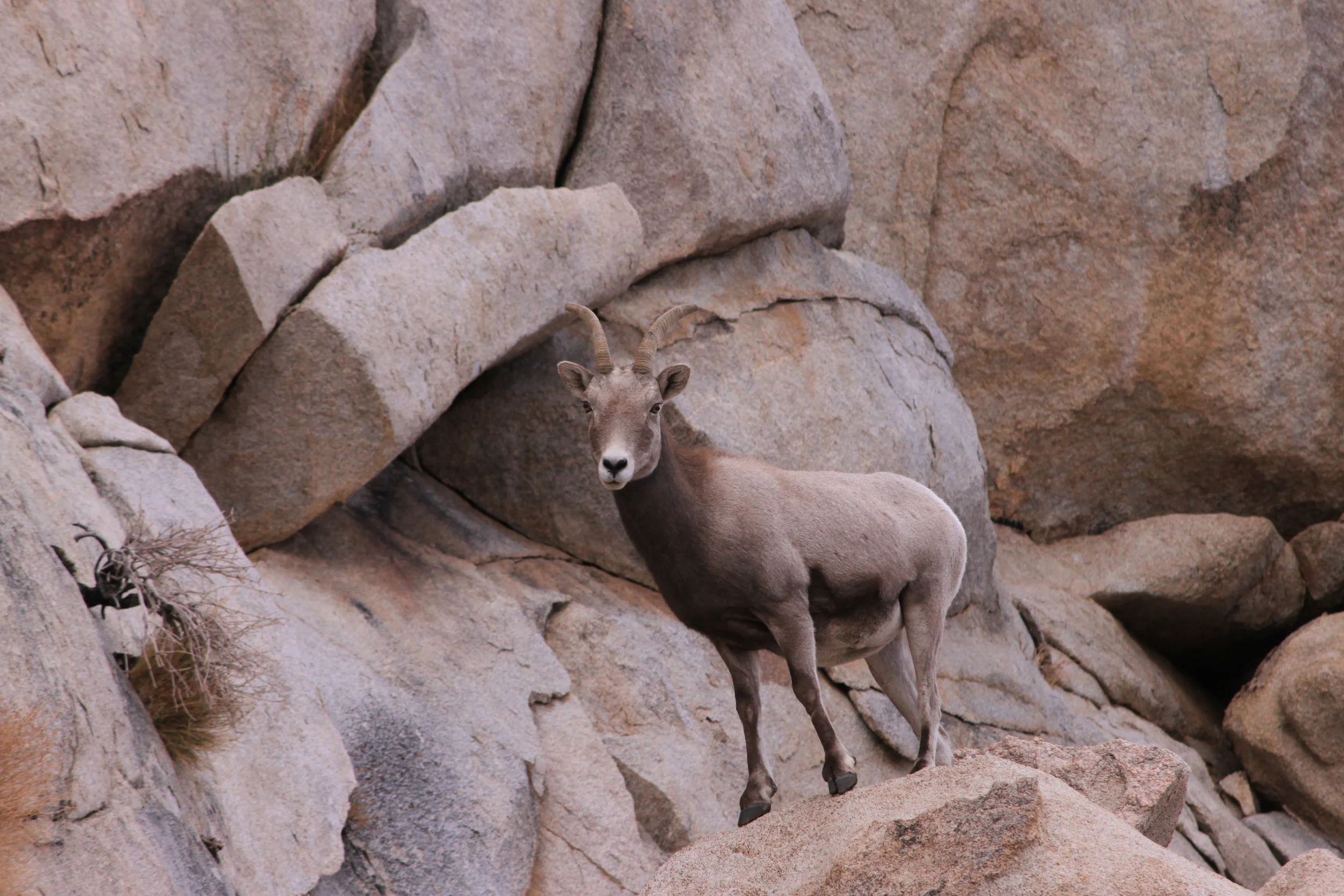Department of Fish & Wildlife
The Sierra Nevada Bighorn Sheep Foundation works in partnership with the California Department of Fish and Wildlife, which in 1999 was charged with developing a program to bring about the recovery of Sierra bighorn. A document called the Recovery Plan for the Sierra Nevada Bighorn Sheep, prepared in 2007, shapes the activities of the Recovery Program. Some of the Program’s ongoing tasks are described below:
Population Surveys
Recovery Program staff hike throughout the herd units, attempting to spot and classify every animal. In this way, they are able to determine the total number of adults, yearlings, and lambs of each sex in each herd unit and compare these numbers to the totals from previous surveys to determine population growth or decline.
Captures
Once or twice a year, the Recovery Program captures a specified number of sheep from each herd unit. The captured sheep are equipped with radio collars, their body fat percentage is determined using an ultrasound, and blood samples are taken to test for disease. The data obtained during captures are used to assess the health of sheep in the population. The radio collars store movement data and allow technicians to find these sheep in the field, observe their use of habitat, and monitor their survival.
Predation Monitoring
Mountain lions are a significant predation threat to Sierra bighorn. While predation is a natural component of any ecosystem, all causes of bighorn mortality must be limited until the population achieves a full recovery. The Recovery Program sometimes employs houndsmen who track lions and monitor their movements in bighorn habitat. As per the authorization of the California Fish and Game Code, lions that pose an imminent threat to bighorn are removed.
Prescribed Burns
Sierra bighorn avoid forest and thick brush, since the quality of forage in such areas is inferior and the low visibility makes predator detection more difficult. Natural and prescribed burns can create and enhance bighorn habitat by clearing brush. The Recovery Program has implemented one successful prescribed burn, in the Diaz Creek area by Mount Langley, and may propose other burns in the future.
Translocations
Translocating sheep from one herd unit to another is a key piece of the recovery puzzle. Translocations can start new populations or boost genetic diversity and augment population growth in smaller herd units. In March 2013 the Recovery Program translocated bighorn to historic habitat at Olancha Peak, creating the first new herd unit in 25 years. Future translocations will focus on establishing herd units in areas west of the Sierra crest, where natural barriers would make it difficult for bighorn to colonize on their own.
The Recovery Program has met with considerable success. From a low of about 100 animals in 1999, the Sierra Nevada bighorn sheep population has grown to more than 400 animals. Of the 12 herd units required for downlisting to ‘threatened’ status, 10 are currently occupied.
Visit the Department’s website to learn more about the Sierra Nevada Bighorn Sheep Recovery Program.





